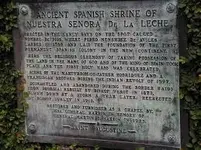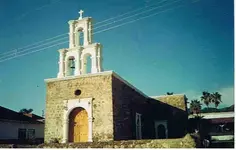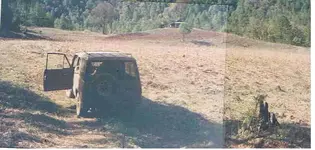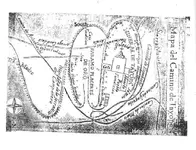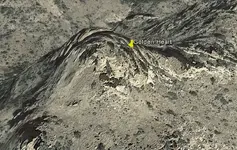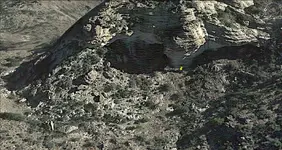Don Jose Tropical Tramp - based on your recommendation on another thread, I just finished The Rivers Ran East, Col. Leonard Clark's account of his 1946 six-month exploration of the extreme upper Amazon tributaries. Although parts of the adventure must surely be embellished (if not invented), Clark himself was the real deal - WWII intelligence officer and special forces leader behind enemy lines in the Far East and highly respected by his peers. The book is very richly descriptive of the rivers (many unnamed), flora, fauna and natives inhabiting a vast area almost totally unexplored at the time. His stated purpose for the trip was to gather pharmaceutical data about plant usage from native witchdoctors for the purpose of scientific research, and the first five months of the journey provides amazing information about what he found. As important as this data later proved to be, Clark's secret goal was to locate the legendary El Dorado, the location of which was provided on an old map he obtained earlier.
Pages 290-295 spell out the secret of El Dorado, at least from Clark's perspective. Here is where the Jesuits are presumably involved, but IMO, Clark is mistaken about them. If the details he presents for the history of El Dorado are true, it seems much more likely that it was the Franciscans, and not the Jesuits, who were partnered with the early Spanish in the secret mission of recovering massive amounts of placer gold from the 'Seven Cities of El Dorado' - known only to the Crown and Church - Santiago de las Montanas, San Francisco de Borja, Legrono, San Reyes, Jaen de Bracamoras, Bajadeloro, and Zamora. These were all permanent outposts on or near the rivers that collected runoff from hundreds of streams draining the adjacent east faces of the Andes. The placer was recovered in massive amounts and caravaned to Lima, then to Panama before being shipped to Spain. The operation continued, off and on, for perhaps a century before the local headhunters finally killed off the remaining Spanish. The main stronghold was San Francisco de Borja, on the Maranon River, allegedly founded in 1549. This is where the Jesuit connection seems to break down.
The Jesuits were not in Peru prior to ca 1570. However, the Franciscans were there from the beginning, with Pizarro - including Marcos de Niza. For what it's worth, the Jesuit Juan Salinas de Loyola is credited in the text as the founder of Santiago de las Montanas in the late 1550's. Obviously, Clark's dates and his Jesuit involvement conflict. What's interesting about Clark's El Dorado history is that the Spanish and the Church were allied in the venture, which was a highly secured secret mission, hidden from everyone except the players involved. Supposedly, the North American 'Seven Cities of Cibola' legends were even cooked up as a diversion to focus attention away from Peru at the time. If true, that means Mendoza, Coronado, Onate, et al, were not in on the secret and were allowed to flounder in their expeditions into North America. Brings to mind the mysterious Marcos.
To make this book even more fun, there's a good looking, tough-as-nails girl in on the chase too. Clark reluctantly allowed her to travel with him, beginning in Iquitos. By the time they got to Borjas, Clark admitted his true goal - El Dorado. Then, the girl, Inez Pokorny, revealed that she too was seeking El Dorado as a secret agent for The National Gold Bearing Society of El Dorado, a well-funded, long-standing syndicate operating out of London and Lima. Inez apparently owns the distinction of being the first woman to travel the entire breadth of South America, from the Amazon's mouth to Quito. She spent most of the trip learning the ways and languages of the natives so that she could negotiate her way beyond the Maranon River. What a book.
Whether the El Dorado and Jesuit portion of the book is true or not, I highly recommend it. Lots of great photos taken by Clark. Plenty of page-turning adventure. Appendices documenting previously unknown rivers, animals, reptiles, trees, fish, tribes, medicines. Lots of people killed by other people, snakes, insects, poisons, fish, blowguns, spears, accidents. Don Jose - thanks for the tip.
Additional Information. These characters were real people. Out of curiosity, I tracked Leonard Francis Clark on Ancestry.com in their public record database. Born in British Columbia in 1907. One 1949 newspaper mention of him - the OSS asked the State Department to go easy on him for alleged war indescetions committed in China during WW2. He was all over the world after Peru - Egypt, Mexico, Columbia, his home base being San Francisco. He drowned in Venezuala in 1957 - the death certificate listed him as 'explorer'.
Inez Ethel Pokorny was interesting too. Born in Detroit in 1911. Lived in Coral Gables, FL in the 30's. Lots of traveling for several years - Hawaii, France, Hong Kong and then, Feb 1947 (a month or so after the Peru adventure, she and Clark sailed together from Panama to Los Angeles (US passports). She apparently lived in CA married to someone named Ballard until her death in 1982.




